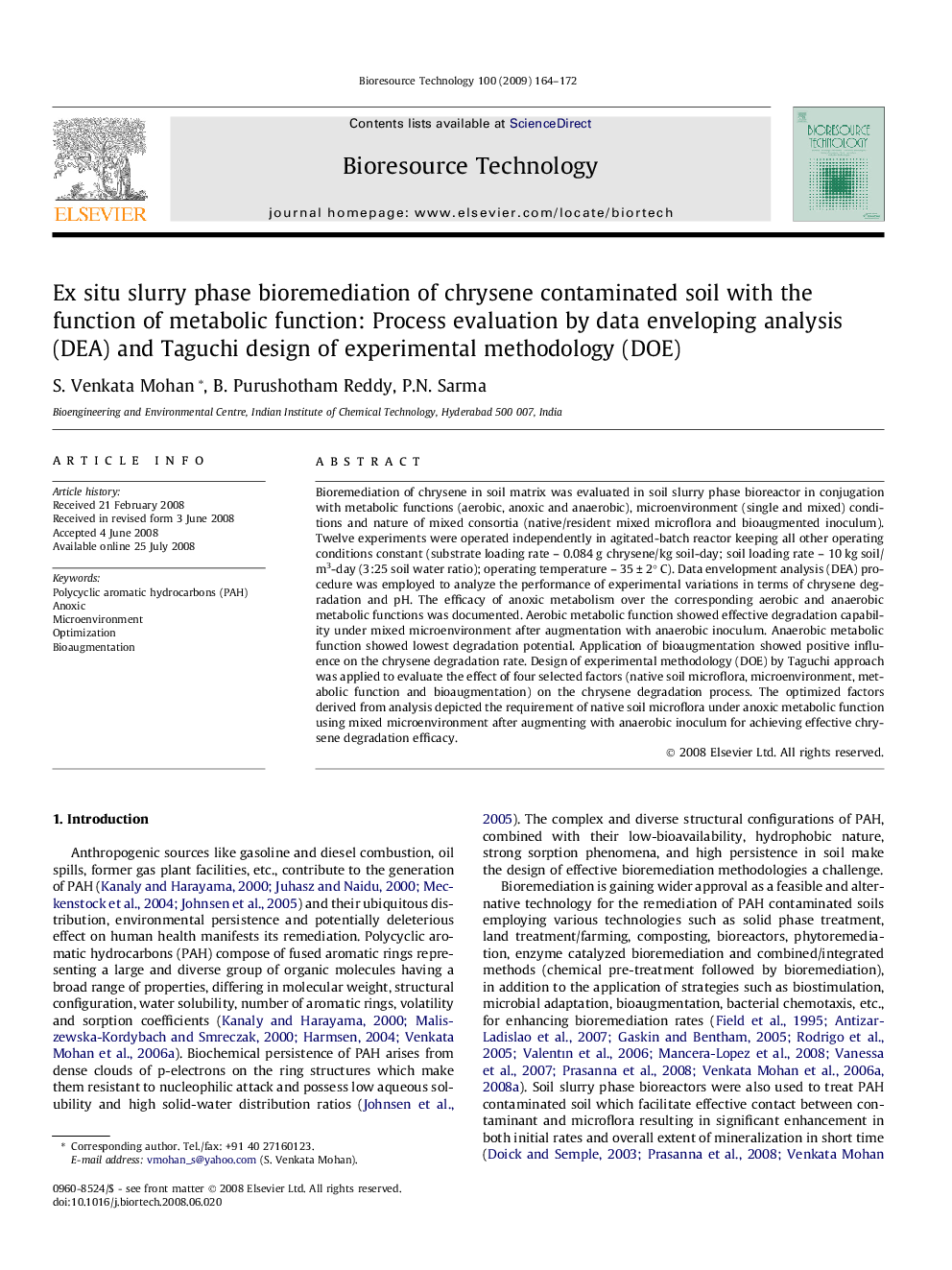| Article ID | Journal | Published Year | Pages | File Type |
|---|---|---|---|---|
| 684241 | Bioresource Technology | 2009 | 9 Pages |
Bioremediation of chrysene in soil matrix was evaluated in soil slurry phase bioreactor in conjugation with metabolic functions (aerobic, anoxic and anaerobic), microenvironment (single and mixed) conditions and nature of mixed consortia (native/resident mixed microflora and bioaugmented inoculum). Twelve experiments were operated independently in agitated-batch reactor keeping all other operating conditions constant (substrate loading rate – 0.084 g chrysene/kg soil-day; soil loading rate – 10 kg soil/m3-day (3:25 soil water ratio); operating temperature – 35 ± 2° C). Data envelopment analysis (DEA) procedure was employed to analyze the performance of experimental variations in terms of chrysene degradation and pH. The efficacy of anoxic metabolism over the corresponding aerobic and anaerobic metabolic functions was documented. Aerobic metabolic function showed effective degradation capability under mixed microenvironment after augmentation with anaerobic inoculum. Anaerobic metabolic function showed lowest degradation potential. Application of bioaugmentation showed positive influence on the chrysene degradation rate. Design of experimental methodology (DOE) by Taguchi approach was applied to evaluate the effect of four selected factors (native soil microflora, microenvironment, metabolic function and bioaugmentation) on the chrysene degradation process. The optimized factors derived from analysis depicted the requirement of native soil microflora under anoxic metabolic function using mixed microenvironment after augmenting with anaerobic inoculum for achieving effective chrysene degradation efficacy.
